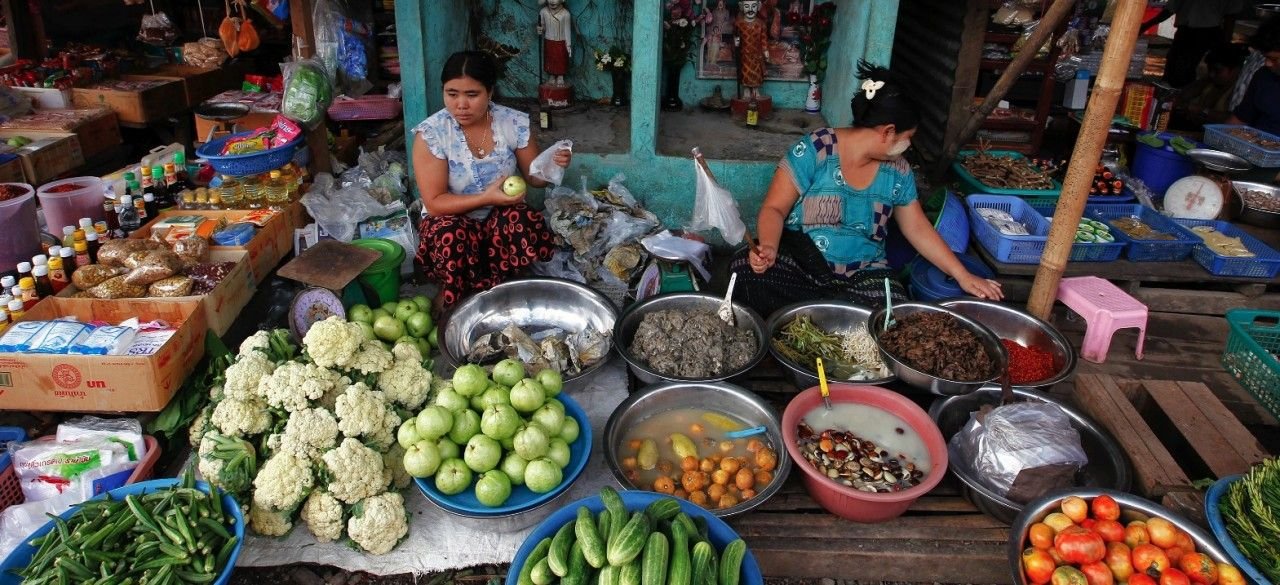The restaurant Do or Dine, in Brooklyn's Bedford-Stuyvesant neighborhood, has won widespread acclaim for its foie gras donut. One of the kids behind it, Justin Warner, even got his own Food Network show, the short-lived Rebel Eats, a title that has me imagining Che Guevara wielding a garlic press. I haven't tried the foie gras donut, nor much want to. The notion of luxuriating on duck liver in one of the more impoverished neighborhoods in New York City - the name of the restaurant is a play on "Bed Stuy, Do or Die," a rhyme from a more combustible time - seems too perverse for the kind of visceral enjoyment food ought to bring.
I see the popularity of Do or Dine as just an urban version of the culinary adventurism perfected by Anthony Bourdain, who has become a Rimbaud of the food world, deranging his taste buds in the most far-flung locales, with the most outlandish delicacies. And I get it, I really do: There is no goong chae nam pla quite like the goong chae nam pla - raw mantis prawns, in case you didn't know - handed to you by a peasant woman in some beachside shack on Phuket. But the whole thing is too fraught for me, deep-fried as it is in cultural exoticism. I'd rather order from my local pizzeria, which is run by a bunch of gruff Albanians. They make a decent square pie and will sometimes give me extra grated parm for free, tied tightly in wax paper, like a gift.
It is precisely because I am not a foodie that I found such immense pleasure in reading Dana Goodyear's Anything That Moves: Renegade Chefs, Fearless Eaters, and the Making of a New American Food Culture. It was like reading Bruce Chatwin on Patagonia or Ryszard Kapuściński on Ethiopia, maybe even Norman Mailer on war. I don't want to be there, but I want to have already been there - for example, at the dinner when Goodyear ate bugs, which she says "have a lot to recommend them" from an ecological standpoint. I have no doubt they do, but can someone pass the onion rings?
This book, however, is not the journalistic version of Fear Factor. Goodyear, a respected poet and a staff writer at The New Yorker (many of the essays here appeared first in that magazine), is curious about what we eat and how, about this "new American cuisine...marked by extreme and challenging ingredients." It is a culture not always catholic, sometimes more perplexing than intriguing. But with newspapers, websites and too-too many blogs shouting about Duluth's emerging food scene and with pork jowl making its way into my $17 cocktail, we need someone to take stock of what, exactly, is going on in the kitchen.
Goodyear lives in Los Angeles, where a whole world of ethnic eats lay beyond the blanched precincts of Beverly Hills and the San Fernando Valley: Lincoln Heights, Filipinotown, a couple of utterly out-of-place Russian restaurants on Sunset Boulevard, a place in West Hollywood that serves authentic Mexico City dishes. The intrepid explorer of all these ethnic cuisines was the food critic Jonathan Gold, whom Goodyear calls "the patron saint" of foodism in Anything That Moves. Gold won a Pulitzer Prize for his food criticism at the LA Weekly in 2007 before becoming the Los Angeles Times's resident gourmand; curiosity seems to drive him as much as hunger does. Traveling to Koreatown to sample Uighur cuisine, for example, Goodyear says he delights in "a sharp, glistening steel skewer stabbed through thin coins of meat sliced from a bull penis."
In recent years, eating has become more of a competitive sport as cooking has become more of an art. Goodyear is generally interested in these twin trends taken to their most absurd, whether in the Weed Dinners of one French-born L.A. chef or the "FedEx" cuisine of Las Vegas, where - locavores be damned - some high-end chefs fly fish in from the Mediterranean on a near-daily basis. Sometimes, the love of food clashes with the rule of law. Approaching the pace of a detective page-turner is Goodyear's skillful investigation into the Southern California raw milk cooperative Rawesome, "an expensive, all-cash members-only specialty story devoted to radically unprocessed food, run out of a lot in Venice, California." To the feds, it may as well be a crystal meth ring, considering the health risks of unpasteurized milk. Goodyear notes that some foodies resemble the Tea Party in their animosity for the government: Who are you to tell me at what temperature I should keep my cheese? Who are you to prohibit shark fin soup?
But foodies, like them or not, are everywhere. Down the block from where I live is an artisanal mayonnaise store, where a couple of young white kids churn eggs the way their ancestors in Minnesota or Ohio might have. Across from the artisanal mayonnaise place is Mitchell's Soul Food, which is bright and unadorned and serves some of the best fried chicken in New York - even the Village Voice said so. Most of the people who frequent Mitchell's are elderly blacks for whom this food, rich in fat and starch, is a cultural legacy. Of course, a few blocks away, I can get chicken fried by the Koreans, which is much spicier. And the local hipsters, with beards and checkered shirts, fry their chickens too, advertising the local provenance of the bird and how humanely it was treated before being butchered and dunked in hot oil.
This is the bounteous beauty of America, where an organization like City Harvest takes donated food from Le Bernardin and gives it to the hungry, where the summer's craze was a deep-fried croissant for which people spent hours upon hours in line, and where the first lady is routinely castigated for her supposed love of arugula. There are restaurants that serve vapors and a new one in Brooklyn - but where else? - at which eaters are commanded to dine in silence. And then there are those of us who prefer the simplicity of a home-cooked meal. What bores we are.

























